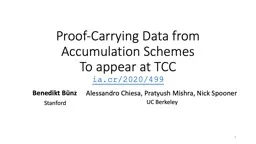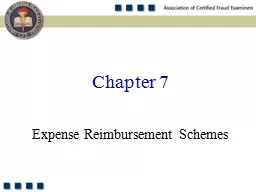PPT-Proof-Carrying Data from Accumulation Schemes
Author : TootsieWootsie | Published Date : 2022-08-04
To appear at TCC iacr2020499 Benedikt Bünz 1 Stanford Alessandro Chiesa Pratyush Mishra Nick Spooner UC Berkeley Motivation Delegating a step nondeterministic
Presentation Embed Code
Download Presentation
Download Presentation The PPT/PDF document "Proof-Carrying Data from Accumulation Sc..." is the property of its rightful owner. Permission is granted to download and print the materials on this website for personal, non-commercial use only, and to display it on your personal computer provided you do not modify the materials and that you retain all copyright notices contained in the materials. By downloading content from our website, you accept the terms of this agreement.
Proof-Carrying Data from Accumulation Schemes: Transcript
Download Rules Of Document
"Proof-Carrying Data from Accumulation Schemes"The content belongs to its owner. You may download and print it for personal use, without modification, and keep all copyright notices. By downloading, you agree to these terms.
Related Documents














